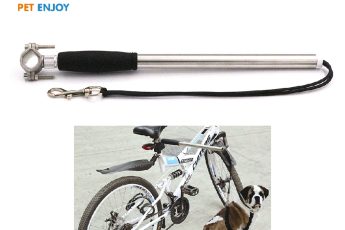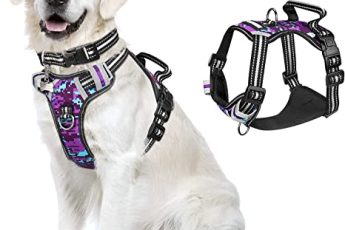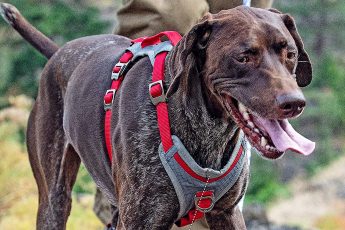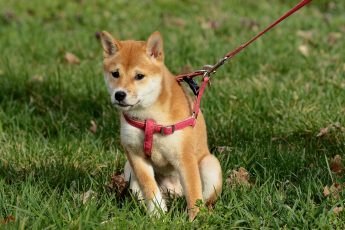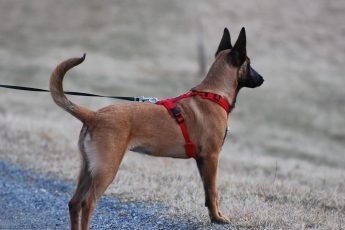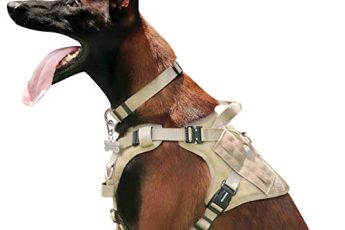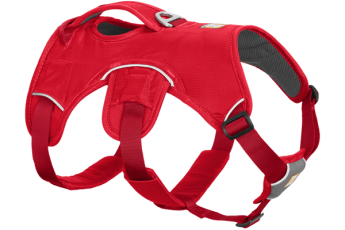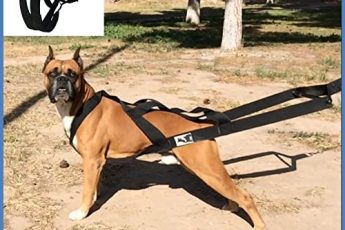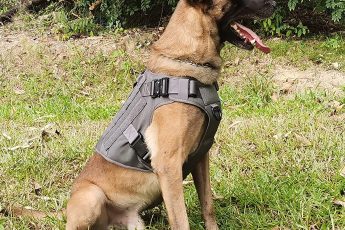Using a dog harness to assist walking is a great option for your canine companion. These devices allow you to pick up your dog from its front or back legs while releasing pressure on the rest of its body. The straps hook into four buckles and allow you to control how much pressure your pet feels. While you can adjust the level of support, velcro straps can wear out over time. For this reason, you should purchase a new harness every few months.
How can I help my dogs back legs?
Your pet may be experiencing difficulty with their back legs. They may have developed this problem due to a congenital defect or aging. These conditions can leave your pet vulnerable to accidents. If you suspect your pet is experiencing hind leg weakness, it is best to consult a veterinarian as soon as possible. Your veterinarian may perform an x-ray and aspirate fluid from the affected joint.
A rear leg sling can be useful for dogs with back limb weakness. It can prevent them from falling and carry some of their weight. It also helps weak dogs walk more easily. A popular rear leg support harness is the GingerLead, which is both comfortable and machine washable. The design also makes it less likely to bunch than other back leg slings. Ultimately, a back leg sling harness may be all that your pet needs to get outside and stay mobile.
Is a harness better for walking your dog?

If you are considering buying a harness for your pooch, you may be wondering whether it is better than a collar. While they are not necessarily better, harnesses do have advantages. The best harnesses are made of strong, durable materials and fit your dog’s size, shape, and weight. They also tend to last longer than cheaper harnesses. Read on to learn about the different types of harnesses available.
A harness is much safer for your dog than a collar. It is less stressful on your dog’s neck and back than a collar can be. Harnesses also allow you to direct your dog’s attention and breathing. Choosing a harness should also be comfortable and adjustable, and make sure it has padding to protect the neck and throat. Harnesses should also be easy to clean and should not put pressure on the neck or throat.
How can I help my dog with mobility problems?
One of the most common mobility issues dogs face is going outside to relieve themselves. A dog harness is an excellent way to provide your companion with the support he needs to stand and move without interfering with his need to answer nature’s call. Choosing a lift harness that does not cover the dog’s sensitive body parts is essential. Here are some tips to consider when buying a dog harness.
Identify where your dog is most uncomfortable and start adjusting accordingly. If your dog has a hard time jumping, you may want to install runner or area rugs. For furniture, you can use a short stool or movable stairs. These items will help your pet maintain balance and make it easier to jump onto furniture. If you’re unable to install a dog wheelchair, you can purchase a dog wheelchair to help it move around easier.
Why is my dog walking weird on back legs?
Is your dog resisting walking in his harness? If so, it’s likely that the harness doesn’t fit properly or his bathing suit is too tight. Alternatively, your dog may simply dislike the harness and doesn’t want to wear it. Whatever the reason, it is always best to address the problem as soon as possible. After all, no dog wants to go swimming while wearing a harness.
The first thing to consider is whether your dog is experiencing any pain in the area where the harness is placed. If so, this could be a sign of irritation in the area. Check for any chafing or rash. In addition to that, he might have a medical problem. Ultimately, you’ll need to consult a veterinarian for a proper diagnosis.
What is the best dog harness for walking?
When buying a dog harness, consider your dog’s size. Larger dogs, for instance, may benefit from a large harness. The pressure it places on the chest prevents them from pulling and is safe for their body. Smaller dogs, on the other hand, might prefer a small harness. These products may also make picking up your dog easier, especially if it’s small. But how do you decide which one is right for your dog? Here are some tips to help you find the right harness for your pup.
Among the different types of dog harnesses, the Fuzzyard Step-in Harness is a popular choice. Soft step-in harnesses, like the Fuzzyard Step-in Harness, are available, as are traditional nylon harnesses. Harnesses with traffic handles are handy when walking your dog on the street, as they can be grabbed off the leash with ease. Some harnesses even have handles for holding your dog close, like the EzyDog Convert Harness, which comes with a soft-touch traffic handle.

How to Use a Dog Harness to Assist Walking
There are many reasons why a dog may need a dog harness to assist walking. If your dog’s back legs are giving out, your options may be limited. Listed below are some of the best dog harnesses to buy. We’ve rated each dog harness on several criteria, including ease of use and sizing. Some of these harnesses did not make the list for various reasons. These reasons may affect your decision when shopping for a dog harness.
Why do old dogs back legs give out?
There are many reasons why old dogs’ hind legs may collapse while wearing a dog harness to assist walking. These hind leg collapses may occur slowly or suddenly. Below are six reasons why your dog may have collapsed back legs. Symptoms of arthritis include difficulty rising from lying down, increased panting, and limping. If you notice any of these signs, it is time to see a veterinarian.
Arthritis: The most common cause of hind leg weakness in dogs is arthritis. Healthy joints contain layers of cartilage that cushion and lubricate joints. Because cartilage isn’t very good at healing, it can wear down over time. This results in inflammation and pain in the joints. If your dog suddenly stops walking on its back legs, you should consult a veterinarian.
What is the most effective no-pull dog harness?
A no-pull dog harness is one that prevents your dog from pulling when you are walking. It has a clip in the front, which tugs on your dog’s chest. This type of harness is the most effective for walking your dog without pulling. If your dog is a heavy puller, you may want to purchase a different type of no-pull dog harness. It is important to remember that a no-pull dog harness will take time to train your dog. You will have to practice with your dog until they learn to walk on their own.
A no-pull dog harness is an adjustable device that wraps around your dog’s front legs and torso. It has a clip on the chest to give you control ahead of your dog. The pressure from the leash causes the dog to turn and steer, which makes it difficult for your dog to pull. An anti-pull dog harness disperses pressure over a wider area of the body, which reduces the risk of neck and throat injuries.
Which dog harness is easiest to put on?
To put on a dog harness, get your dog in a calm position. Start by putting the collar loop on first. Next, move around the dog to buckle the straps on the body loop. Then, put the other loops around the dog’s neck and ribs. Once you’ve got these two straps fastened, you’re ready to put the dog harness on. Depending on your dog’s size, you may want to adjust the straps so that you don’t have to reach all the way around your dog.
Putting on a dog harness isn’t difficult as long as you take your time and know the proper technique. With a little guidance, you can harness your dog in minutes and have them walking right away. A well-fitted harness will increase the comfort level of your dog while walking. And because dogs can grow into very large, lightweight harnesses can cause injury. This is why we recommend a dog harness that has a front attachment for better control.
Should you walk dogs with arthritis?
A dog with arthritis may seem extra sensitive, grumpy, and irritable. Walking helps relieve these feelings and provides exercise. In addition, walking helps the digestive system and promotes routine pooping and urination. Regular exercise helps prevent infections and relieve boredom, two benefits of walking for dogs with arthritis. But how often should you walk your dog with arthritis? Here’s an outline of how often your dog should be walking.
If your dog has arthritis, it’s important to start a new exercise routine. Start by taking a short walk with him every few days to increase his activity level. This exercise helps lubricate the joints and promote blood circulation. Unlike humans, dogs need regular exercise. Short walks with moderate intensity help ease joint pain and stiffness. But don’t force your dog to walk a long distance; short walks can help alleviate the symptoms of arthritic pain and improve the quality of life.
How do you walk a dog without pulling?
Walking your dog on leash can be a frustrating experience. But using a no-pull dog harness can give you more control. These harnesses allow you to walk your dog without pulling and can also help improve leash skills. If your dog pulls often, a no-pull harness is the best solution for your problems. Using this harness will also prevent your dog from getting injured while walking.
To begin retraining your dog to walk without pulling, attach a leash to the front of its harness. Once the leash is attached, turn the dog around. Slowly walk to catch up with your dog. By the time you reach the other side, your dog should be walking next to you without any tension in the leash. Then, reward your dog for walking by your side.

